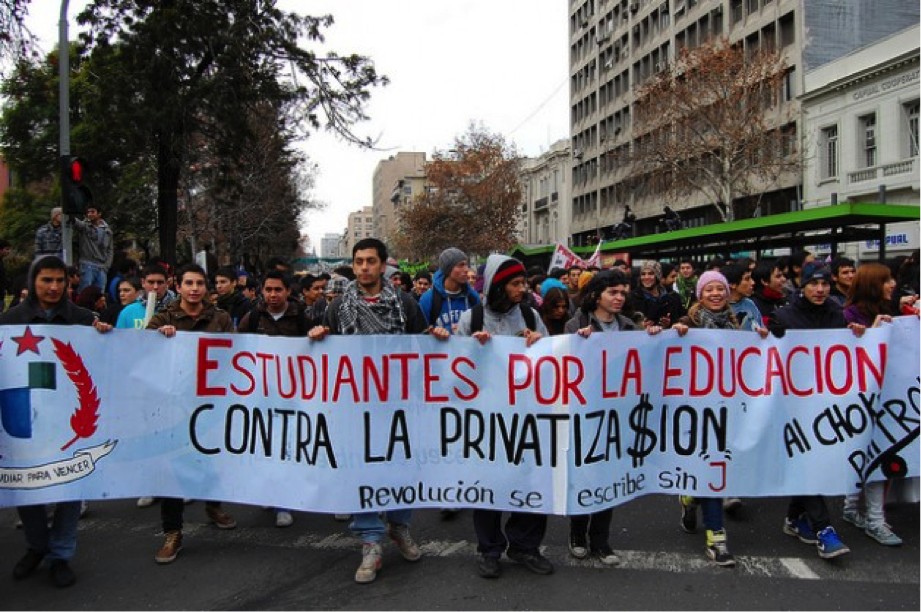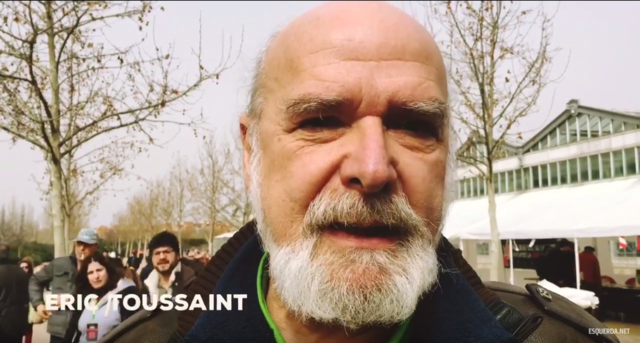Australians are quite rightly upset because the Catholic Church hierarchy failed to act to expose and stop long-term, egregious child sexual abuse of about 40,000 Australian children by Catholic Church personnel. However look-the-other-way Australia resolutely ignores 4.4 million Australians adults who have been sexually abused as children, and the deaths this century of 11.9 million under-5 year old infants and 15.8 million avoidable deaths (half of children) in war-torn Muslim countries being criminally violated by pro-Zionist, pro-Apartheid Israel, US lackey Australia.
Australia has a long-running, $0.5 billion-cost Royal Commission into Institutional Responses to Child Sexual Abuse that has been investigating child sexual abuse by government institutions and by non-government institutions including church organizations. It has recently investigated child sexual abuse by Catholic Church personnel (priests and Christian brothers) in the Victorian city of Ballarat. The Royal Commission demanded the attendance of Australia’s top Catholic prelate, Cardinal George Pell, who had served in Ballarat, but when Cardinal Pell (based in the Vatican) declined for medical reasons, the Royal Commission permitted him to be questioned at length in Rome via a video link. In short, Cardinal Pell claimed that he didn’t know of these awful crimes, a position that many regard as implausible.
Top Australian ABC TV journalist Leigh Sales interviewing a Catholic priest over the silence of the Catholic Church over egregious child sexual abuse over many years by Catholic Church personnel in Ballarat:
“Let’s start with the first scenario and if I just take the example of Ballarat, where we know there were just so many egregious examples of abuse. How is it that there was not one good man there who was willing to stand up and say – and blow the whistle on this?” [1].
Leigh Sales, in articulating this key point in this and related matters of egregious child abuse, has evidently referenced the aphorism attributed to Edmund Burke that “Evil happens when good men do nothing”. While one clearly must approve of the legitimate indignation of Leigh Sales and indeed of Australian Mainstream media in general over Catholic Church inaction over sexual abuse of 40,000 children by Catholic Church personnel, one is obliged “to stand up and say – and blow the whistle on” vastly greater crimes against children that are resolutely ignored by Mainstream media in look-the-other-way Australia, specifically (1) another 4.4 million Australians adults who have been sexually abused as children, (2) 1.2 million under-5 infant deaths and the avoidable deaths of 1.7 million Iraqis under Sanctions (about half of them children), and (3) 11.9 million under-5 infant deaths and 15.8 million avoidable deaths (half of children) this century in Muslim countries being war criminally violated by pro-Zionist, pro-Apartheid Israel, US lackey Australia.
The cowardly silence of Australian Mainstream media about horrendous and deadly, mass paedocidal US Alliance atrocities against children throughout the world (and currently mostly in the Muslim world) can be explained by the ugly realities that Australian Mainstream media are substantially American-owned and overwhelming US-subservient. Indeed US Mainstream media (and to a slightly lesser extent Western Mainstream media in general) are craven propaganda agents of the war criminal and mass murdering state terrorists running the United States of America (for a cogent scholarly analysis of this “propaganda model” see “Manufacturing Consent. The Political Economy of the Mass Media” by Professors Edward S. Herman and Noam Chomsky) [2].
Nevertheless, there are notable exceptions to this Mainstream culture of cowardly silence and none more pertinent here than Lesley Stahl (born December 16, 1941), an anti-racist Jewish American television journalist. Since 1991, she has reported for CBS on “60 Minute”. A graduate of Wheaton College, her career received a boost from her coverage of the Watergate scandal. In October 2007, Nicolas Sarkozy, President of France, war criminal, warmonger and pro-Zionist, stood up and walked away from an interview with Lesley Stahl, because she asked him about his relationship with his soon-to-be estranged spouse [3]. Lesley Stahl is famous for asking then US Ambassador to the UN (1993-1997) and later US Secretary of State (1997-2001), Madeleine Albright, on “60 Minutes” in 1996 about the “half a million children” who had died by then under Sanctions on Iraq. On May 12, 1996, Albright defended UN sanctions against Iraq in this “60 Minutes” segment in which Lesley Stahl asked her “We have heard that half a million children have died. I mean, that’s more children than died in Hiroshima. And, you know, is the price worth it?” and Albright obscenely replied “we think the price is worth it” [4, 5].
Where are the Lesley Stahls today in 21st century Australia, America or the West? Indeed a search of the Australian ABC for “Lesley Stahl” gives only 4 results, 3 dealing with her reportage of the US sub-prime crisis and only 1 (a detailed reader comment by me) dealing with her confrontation of Madeleine Albright. I have outlined below some of the most appalling child abuse realities that are ignored by Australian and indeed Western Mainstream media.
(1) 4.4 million adult Australians have been sexually abused as children.
The appalling abuse of 40,000 Australian children by Catholic Church personnel represents the 1% tip of the iceberg of horrendous child sexual abuse which is endemic in Australia [6-14]. Thus psychiatrist Dr Carolyn Quadrio (University of New South Wales School of Psychiatry) advised the Australian Royal Commission into Institutional Responses to Child Sexual Abuse that
“They [child abuse victims] often have unhealthy lifestyles so they’re prone to substance abuse and poverty and unemployment … and all of that adds up to something like 10 to 20 years less life for a child who’s been traumatised”
and estimated that 25- 30% of Australian girls and about 5- 15% of Australian boys suffered some form of sexual abuse, with 30% of girls and 20 % of boys in institutions being abused [11].
The former Gillard Labor Government instituted a Royal Commission into child sexual abuse that is unfortunately confined to investigating horrendous institutional child sexual abuse (e.g. up to 40,000 cases over the last 40 years by Catholic Church personnel). However both the ultra-conservative Liberal Party-National Party Coalition Government and the Right-dominated Labor Party Opposition continue to ignore the awful, expert-reported reality that about 34% of Australian women and 16% of Australian men – 4.4 million Australians in all – have been subject to child sexual abuse i.e. the Coalition and Labor (aka the Lib-Labs) have ignored huge non-institutional child sexual abuse. This horrendous child sexual abuse continues unaddressed under the new Coalition Government. Similar estimates of high child sexual abuse have been made for the US and Israel.
Notwithstanding enormous Government and Mainstream media claims of horrendous Indigenous child sexual abuse (claims that led to a racist military Intervention in Australian Northern Territory Indigenous communities), the subsequent “Little Children are Sacred” Report (p57; [8]) stated that
“As noted previously, it is not possible to accurately estimate the extent of child sexual abuse in the Northern Territory’s Aboriginal communities (see The Extent of Child Sexual Abuse, Part II). However, the Inquiry has found clear evidence that child sexual abuse is a significant problem across the Territory”.
However in contrast to its inability to accurately quantitate the extent of child abuse in Indigenous communities, the “Little Children are Sacred” Report (pp234-236; [8] ) refers to studies in America indicating that 25% of females and 10% of males experience childhood sexual abuse [15] and studies in Australia indicating that 34% of females and 16% of males today experienced child sexual abuse [9]. The Australian Institute of Criminology determined that in Australia 1 in 3 females and 1 in 6 males will be sexually abused as children [12, 13].
Of course Australia and the US are not alone in this and child abuse is a horrible international problem, David Finkelhor finding that
“Surveys of child sexual abuse in large nonclinical populations of adults have been conducted in at least 19 countries in addition to the United States and Canada, including 10 national probability samples. All studies have found rates in line with comparable North American research, ranging from 7% to 36% for women and 3% to 29% for men. Most studies found females to be abused at 1.5 to 3 times the rate for males. Few comparisons among countries are possible because of methodological and definitional differences. However, they clearly confirm sexual abuse to be an international problem” [16].
A recent survey of Israeli children found that 50% reported child abuse and 17% reported child sexual abuse [14].
If the upper estimate of 25% of adult Australians have been sexually abused as children, this corresponds to 4.4 million Australians having been thus abused (as determined from UN Population Division demographic data) [8]. 6.65 per 1,000 Australians die each year and accordingly, if we ignore child mortality (very low in rich countries like Australia) and apply this figure to adult Australians, then 117,050 adult Australians die each year and of these 25% (29,000) die prematurely each year linked to child sexual abuse [10, 11]. However these appalling realities are utterly ignored by Australian Mainstream media. Of course children are horribly abused in Australia in all kinds of other ways, ranging from the intellectual child abuse of state-subsidized religious schools to the highly abusive imprisonment of refugee children in remote concentrations camps without charge or trial and for the asserted “crime” of being refugees [17]. While 80% of the Australian electorate vote for such cruel treatment of refugee children by voting for the dominant Lib-Labs (Coalition and Labor Right), there is nevertheless widespread disquiet as reflected in Mainstream media discussion. Nevertheless, while this horrible maltreatment of refugee children is widely discussed, and there is huge public indignation over the rape of 40,000 children by Catholic clergy, there is virtually no Mainstream discussion of the 4.4 million adult Australians who have been sexually abused as children.
(2) 1.2 million under-5 Iraqi infant deaths and 1.7 million avoidable Iraqi deaths under Australia- and US Alliance-imposed Sanctions.
In 1996 Lesley Stahl had read expert reports indicating that by then 0.5 million Iraqi children had died under the war criminal Sanctions applied on Iraq by the US Alliance [3-5]. However the killing of children under Sanctions continued and it was estimated from UN Population Division demographic data (from before the US installed the Maliki Government in Iraq) that 1.2 million under-5-year old Iraqi children had died under Sanctions in the period 1990-2003, about 90% avoidably and due to war criminal US Alliance targeting of the civilian population. It could be further estimated that 1.7 million Iraqis (half children) died avoidably from deprivation under Sanctions [18-23]. While these UN-based estimates by me were published by Australasian Science [21] and the ABC [22] and broadcast nationwide by the ABC [23], they were otherwise resolutely ignored by Australian Mainstream media, politicians and academics.
(3) 11.9 million under-5 infant deaths and about 15.8 million avoidable deaths from deprivation (half of children) this century in Muslim countries being violated by US lackey Australia.
Pro-Zionist, pro-Apartheid Israel and US lackey Australia has been involved in large-scale and deadly child abuse overseas in impoverished countries in which it is still war criminally waging war. US lackey Australia has variously had its armed forces or intelligence agencies involved in US wars in a swathe of largely Muslim countries as follows: Afghanistan (variously invasion, occupation, training, guarding; 2001- present; 14.5 years); Iraq (variously sanctions, invasion, occupation, training, guarding, and now renewed training and bombing in Australia’s Seventh Iraq War in 100 years; 1990-present; 25.5 years); and Syria (bombing in Australia’s Third Syrian War in 100 years; September 2015-present; 0.5 years) [18-24 ].
In addition, this century Australian military and intelligence personnel have been involved in illegal US drone strikes in a swathe of Muslim countries through the critical drone targeting information from the US-Australian electronic spying facility at Pine Gap [25-27]. In addition some Australian personnel have been seconded to serve with US forces in conducting illegal drone strikes [27]. These Australia-assisted US drone strikes have been conducted in various Muslim countries as follows: Afghanistan (2008-present; 8 years); Iraq (2008-present; 8 years); Libya (2011-present; 4 years); Pakistan (2004-present; 12 years); Somalia (2007-present; 9 years); and Yemen (2002-present; 14 years) [28, 29].
Finally, Zionist perverted and subverted Australia is arguably only second to Zionist-perverted and subverted America in its support for nuclear terrorist, racist Zionist-run, democracy-by-genocide Apartheid Israel and hence its ongoing Palestinian Genocide (100% of the ruling Coalition and over 90% of the Labor Opposition support Apartheid Israel; in contrast the decent Australian Greens are opposed to Apartheid, human rights abuse, war crimes and genocide). Zionist Australians are free to serve and commit war crimes (even against Australians) in the war criminal Israeli Defence Force; Australian donations towards the Jewish National Fund (and hence the ongoing ethnic cleansing of Palestine) are tax deductible; and there is extensive Israeli-Australia collaboration in the intelligence and military research and development areas [30-35].
Australia is involved in war crimes in these wars in 4 major ways as summarized below.
(1) A nation can only invade another country if (a) it has UN permission, (b) it has been invited to do so by the government of the country being invaded, or (c) if it has been invaded by the country to be invaded, and then only after serious negotiations with the country to be invaded. These criteria have not been satisfied by Australia in these late 20th century and 21st century wars against Muslim countries. The sine qua non of Australian politics since the CIA-backed removal of the Whitlam Government in 1975 has been “all the way with the USA” and accordingly the only invitation Australia needs to invade other countries is one from America. The Australian re-invasion of Iraq in 2014 with the bombing of Sunni rebels and training of Iraqi soldiers (Australia’s Seventh Iraq War in 100 years) was requested by the US and “invited” by the Shia-dominated Iraqi Government that was installed by the USafter US Alliance destruction of secular Iraqi Baathists and others it did not like.
(2) The use of drones and of other high impact, high technology weapon systems necessarily involve the killing of Indigenous inhabitants with major collateral civilian deaths anywhere on earth that the US chooses [26, 27].
(3) Killing of large numbers of Indigenous people in such wars can violate Article 2 of the 1948 UN Genocide Convention which states that :
“In the present Convention, genocide means any of the following acts committed with intent to destroy, in whole or in part, a national, ethnic, racial or religious group, as such: a) Killing members of the group; b) Causing serious bodily or mental harm to members of the group; c) Deliberately inflicting on the group conditions of life calculated to bring about its physical destruction in whole or in part; d) Imposing measures intended to prevent births within the group; e) Forcibly transferring children of the group to another group” [36].
(4) The occupation of other countries by such invasions imposes a crucial obligation on the invaders as set out by Articles 55 and 56 of the Geneva Convention relative to the Protection of Civilian Persons in Time of War which both declare that an Occupier is obliged to provide the conquered subjects with life-sustaining food and medical requisites “to the fullest extent of the means available to it” [37]. As described below, the Geneva Convention is being grossly violated by the US Alliance and Australia as revealed by appalling UN Population Division-estimated infant mortality statistics in Muslim countries variously attacked and /or occupied by the US and Australia in the 21st century.
The UN Population Division World Population Prospects 2015 Revision provides detailed, year-by-year information for all countries of population, births, and under-5 infant deaths [38]. This information has been used to estimate (a) the average annual under-5 infant deaths in the first 15 years of the 21st century, (b) total 21st century under-5 infant deaths (15 x (a)), and (c) total 21st century avoidable deaths from deprivation [39] for the following countries violated by Australia as part of the US Alliance:
Afghanistan: (a) 132,473 per year, (b) 1,987,000, (c) 2,356,000.
Iraq: (a) 42,744 per year, (b) 641,000, (c) 750,000 [a likely gross underestimate due to US-installed Iraq Government fraudulence].
Libya: (a) 4,007 per year, (b) 60,000, (c) 84,000.
Pakistan: (a) 475,252 per year, (b) 7,129,000, (c) 9,746,000.
Palestine: (a) 3,510 per year, (b) 53,000, (c) 75,000.
Somalia: (a) 61,292 per year, (b) 919,000, (c) 1,285,000.
Syria: (a) 8,685 per year, (b) 130,000, (c) 203,000.
Yemen: (a) 65,513 per year, (b) 983,000, (c) 1,285,000.
We can therefore determine that about 11.9 million under-5 year old infant deaths have occurred this century in Muslim countries violated by Australia as a US lackey. Under-5 year old infant deaths in Apartheid Australia and Apartheid Israel are 1,464 and 740 per year, respectively, or 22,000 and 11,000, respectively, for the 21st century. “Under-5 infant deaths per thousand births” is 5 for Israel and Australia as compared to 112 (for Afghanistan), 39 (Iraq; and possibly higher since there is evidence that US-installed Iraqi Government is minimizing infant deaths), 29 (Libya), 97 (Pakistan), 27 (Palestine), 147 (Somalia), 17 (Syria) and 83 (Yemen), this indicating that the under-5 infant deaths in these Australia- and US Alliance-violated countries are about 70-95% avoidable.
However it gets worse. Thus using the latest UN Population Division demographic data (World Population Prospects 2015 Revision) [38] one can estimate that in the 21st century 15.8 million people (about half children) have died avoidably from deprivation in Muslim countries violated by Australia as part of the US Alliance. This may be underestimated by over 1 million because of evidence that the US-installed Iraq Government is minimizing mortality data – thus, according to data given to the UN by the US-installed Iraqi Government, the infant mortality rate in Iraq decreased under the successive burdens of Sanctions and Occupation!
Concluding remarks
Barbara Kingsolver in her great novel “The Lacuna” (lacuna meaning hiatus, blank, missing part, gap, cavity, or empty space) has Russian Communist revolutionary and theorist Leon Trotsky (Lev) and his assistant Van having the following discussion about media (2009):
“”But newspapers have a duty to truth”, Van said. Lev [Trotsky] clicked his tongue. “They tell the truth only as the exception. Zola [French novelist of “J’accuse” fame] wrote that the mendacity of the press could be could be divided into two groups: the yellow press lies every day without hesitating. But others, like the Times , speak the truth on all inconsequential occasions, so they can deceive the public with the requisite authority when it becomes necessary.” Van got up from his chair to gather the cast-off newspapers. Lev took off his glasses and rubbed his eyes. ” I don’t mean to offend the journalists; they aren’t any different from other people. They’re merely the megaphones of other people” … [Trotsky observes to his assistant Shepherd] “Soli, let me tell you. The most important thing about a person is always the thing you don’t know”” [40, 41].
This subtle aspect of Mainstream media lying is well illustrated by both the Murdoch “yellow press” and the “quality press” of White Australia rightly condemning the appalling abuse of 40,000 Australian children by Catholic clergy and the subsequent repugnant inaction of the Catholic Church hierarchy, while utterly ignoring the appalling realities of (1) 4.4 million adult Australians having been sexually abused as children, (2) 1.2 million under-5 Iraqi infant deaths and 1.7 million avoidable Iraqi deaths under Australia- and US Alliance-imposed Sanctions, and (3) 11.9 million under-5 infant deaths and 15.8 million avoidable deaths from deprivation (half of children) this century in Muslim countries being violated by US lackey Australia.
It appears that for Mainstream media presstitutes, the greater the crime the greater the silence.
In 1945 many of the defeated Germans declared that “they didn’t know” and adopted a CAAAA (C4A) protocol involving Cessation and Acknowledgement of the crimes, Apology and Amends for the crimes and Assertion “never again to anyone”. However in US lackey Australia, there is no Cessation, Acknowledgement, Apology, Amends or Assertion “never again” in relation to massive endemic child abuse within Australia that has impacted over 4 million now adult Australians, and the passive mass murder of millions of Muslim children in the genocidal, Zionist-promoted US War on Muslims.
Those who ignore, minimize, obfuscate, suggest, support, promote or are otherwise complicit in crimes against children have crossed the line between decent Humanity and Nazi-style barbarism. As they wait in vain for just one more Mainstream journalist to report these horrendous, deadly, Elephant in the Room child abuse realities, decent people must (a) inform everyone they can, and (b) urge and apply Boycotts, Divestment and Sanctions (BDS) against all those people, politicians, parties , companies, corporations and countries disproportionately involved in crimes against children.
Dr Gideon Polya taught science students at a major Australian university for 4 decades. He published some 130 works in a 5 decade scientific career, most recently a huge pharmacological reference text “Biochemical Targets of Plant Bioactive Compounds” (CRC Press/Taylor & Francis, New York & London , 2003).
Notes:
[1]. “Catholic priest says Royal Commission wouldn’t exist if people fulfilled their pastoral duty”, ABC TV 7.30 Report, 3 March 2016: http://www.abc.net.au/7.30/content/2015/s4418285.htm ).
[2]. Edward S. Herman and Noam Chomsky, “Manufacturing Consent. The Political Economy of the Mass Media” , Pantheon, New York, 1988, 2002.
[3]. “Lesley Stahl”, Wikipedia: http://en.wikipedia.org/wiki/Lesley_Stahl .
[4]. Lesley Stahl and Madeleine Albright quoted in “Madeleine Albright”, Wikipedia:http://en.wikipedia.org/wiki/Madeleine_Albright .
[5]. “STAHL, Lesley. Lesley Stahl to Madeleine Albright: “Half a million [Iraqi] children have died … is the price worth it?”, Iraqi Holocaust, Iraqi Genocide”: https://sites.google.com/site/iraqiholocaustiraqigenocide/stahl .
[6]. Gideon Polya, “Horrendous Australian child sexual abuse”, MWC News, 15 November 2012:http://mwcnews.net/focus/analysis/22859-gideonpolya-sexual-abuse.html .
[7]. Gideon Polya, “Horrendous Child Abuse By Pro-war, Pro-Zionist, Climate Criminal Australian Coalition Governments”, Countercurrents, 4 December, 2013: http://www.countercurrents.org/polya041213.htm .
[8]. “Little Children are Sacred” Report:http://web.archive.org/web/20070703014641/http://www.nt.gov.au/dcm/inquirysaac/pdf/bipacsa_final_report.pdf .
[9]. Dunne, M.P., Purdie, D.M., Cook, M.D., Boyle, F.M. & Najman, J.M.(2003), Is child sexual abuse declining? Evidence from a population-based survey of men and women in Australia , Child Abuse & Neglect, vol. 27 (2), pp141-152).
[10]. Gideon Polya, “Sectarian Australian Mainstream Ignores Horrendous Child Sexual Abuse Of 4.4 Million Australians”, Countercurrents, 15 November, 2012: http://www.countercurrents.org/polya151112.htm ,
[11]. Jane Lee, “Child abuse victims lead “shorter lives” than other children, royal commission hears”, The Age, 25 May 2015:http://www.theage.com.au/victoria/child-abuse-victims-live-shorter-lives-than-other-children-royal-commission-hears-20150525-gh8y1d.html .
[12]. Australian Institute of Criminology (1993). Second Conference on Violence (June 1993).
[13]. Brave Hearts, “Child sexual assault: facts and statistics”:https://www.bravehearts.org.au/files/Facts%20and%20Stats_updated141212.pdf .
[14]. Gideon Polya, “Horrendous Pro-Zionist, Zionist And Apartheid Israeli Child Abuse Exposed”, Countercurrents, 21 April, 2014:http://www.countercurrents.org/polya210414.htm .
[15]. Finkelhor, D. (1994), Current information on the scope and nature of child sexual abuse”, Future of Children, 4(2), pp31-53).
[16]. David Finkelhor, “The international epidemiology of child sexual abuse”, Child Abuse & Neglect, Volume 18, Issue 5, May 1994, Pages 409–417: http://www.sciencedirect.com/science/article/pii/0145213494900264 .
[17]. Gideon Polya, “Australian Coalition Government & Labor Opposition Trash Human Rights, Child Rights, Free Speech & Medical Ethics”, Countercurrents, 15 July, 2015: http://www.countercurrents.org/polya150715.htm .
[18]. “Iraqi Holocaust, Iraqi Genocide”: http://sites.google.com/site/iraqiholocaustiraqigenocide/ .
[19]. “Muslim Holocaust Muslim Genocide”: https://sites.google.com/site/muslimholocaustmuslimgenocide/ .
[20]. Gideon Polya, “Body Count. Global avoidable mortality since 1950”, that includes an avoidable mortality-related a history of every country since Neolithic times and is now available for free perusal on the web: http://globalbodycount.blogspot.com/ .
[21]. Gideon Polya, “Iraqi Holocaust”, ConScience column, Australasian Science, 2 June 2004:http://www.shiachat.com/forum/topic/33427-iraqi-holocaust/ .
[22]. Gideon Polya, “Australian complicity in Iraq mass mortality” in “Lies, Deep Fries & Statistics” (edited by Robyn Williams, ABC Books, Sydney, 2007.
[23]. Gideon Polya, “Australian complicity in Iraq mass mortality”, ABC Radio National “Ockham’s Razor”, 28 August 2005: http://www.abc.net.au/radionational/programs/ockhamsrazor/australian-complicity-in-iraq-mass-mortality/3369002#transcript .
[24]. “Afghan Holocaust, Afghan Genocide”: http://sites.google.com/site/afghanholocaustafghangenocide/ .
[25]. Philip Dorling, “Australian intelligence “feeding data” for deadly US drone strikes”, Sydney Morning Herald, 26 May 2014:http://www.smh.com.au/federal-politics/political-news/australian-intelligence-feeding-data-used-for-deadly-us-drone-strikes-20140526-38ywk.html .
[26]. Mark Corcoran, “Drone strikes based on work at Pine Gap could see Australians charged, Malcolm Fraser says”, Sydney Morning Herald, 29 April 2014: http://www.abc.net.au/news/2014-04-28/australians-could-be-charged-over-us-drone-strikes-fraser/5416224 .
[27]. John Stapleton, “Australia’s dirty secret”, UNSW Canberra, 4 December 2015: https://www.unsw.adfa.edu.au/drone-wars-australias-dirty-secret .
[28]. Get the data: drone wars”: https://www.thebureauinvestigates.com/category/projects/drones/drones-graphs/ .
[29]. Chris Woods and Alice K. Ross, “US and Britain launched 1,200 drone strikes in recent wars”, The Bureau of Investigative Journalism, 4 December 2012: https://www.thebureauinvestigates.com/2012/12/04/revealed-us-and-britain-launched-1200-drone-strikes-in-recent-wars/ .
[30]. Gideon Polya, “Racist Zionism and Israeli State Terrorism threats to Australia and Humanity”, Palestinian Genocide:https://sites.google.com/site/palestiniangenocide/racist-zionism-and-israeli .
[31]. Philip Dorling, “ US share raw intelligence on Australia with Israel ”, Sydney Morning Herald, 12 September 2013:http://www.smh.com.au/national/us-shares-raw-intelligence-on-australians-with-israel-20130912-2tllm.html .
[32]. Gideon Polya, “Coalition-Ruled Apartheid Australia Backs Apartheid Israel & Rejects Descriptive “Occupied” For The Occupied Palestinian Territories”, Countercurrents, 11 June, 2014: http://www.countercurrents.org/polya110614.htm .
[33]. M. Shahid Alam, “Two White sisters in Asia: Israel and Australia ”, Electronic Intifada, 7 November 2006:http://electronicintifada.net/content/two-white-sisters-asia-israel-and-australia/6510 .
[34]. Gideon Polya, “Australian Universities Complicit With Pro-Zionist Censorship And Genocidal Israeli Militarism”, Countercurrents, 24 May, 2012: http://www.countercurrents.org/polya240512.htm .
[35]. “Palestinian Genocide”: https://sites.google.com/site/palestiniangenocide/ .
[36]. “Convention on Prevention and Punishment of the Crime of Genocide”: http://www.hrweb.org/legal/genocide.html
[37]. “GENEVA CONVENTION. Articles 55 and 56 of the Geneva Convention Relative to the Protection of Civilians in Time of War: Occupier must supply life-sustaining requisites “To the fullest extent of the means available to it””, Muslim Holocaust Muslim Genocide”: https://sites.google.com/site/muslimholocaustmuslimgenocide/geneva-convention .
[38]. UN Population Division World Population Prospects, the 2015 Revision: http://esa.un.org/unpd/wpp/ .
[39]. Gideon Polya,“Paris Atrocity Context: 27 Million Muslim Avoidable Deaths From Imposed Deprivation In 20 Countries Violated By US Alliance Since 9-11”, Countercurrents, 22 November, 2015: http://www.countercurrents.org/polya221115A.htm .
[40]. Barbara Kingsolver, “The Lacuna”, Faber & Faber, London, 2009, part 3, p159.
[41]. “Mainstream Media Lying”: https://sites.google.com/site/mainstreammedialying/home .
![]() The United States Is Led by Two Corrupt Establishments
The United States Is Led by Two Corrupt Establishments ![]() American Exceptionalism Presents an Election Made in Hell
American Exceptionalism Presents an Election Made in Hell ![]() Economists and Financial Experts in Favor of Bernie Sanders’ Wall Street Reforms
Economists and Financial Experts in Favor of Bernie Sanders’ Wall Street Reforms ![]() Hillary Clinton: the Queen of Chaos and the Threat of World War III
Hillary Clinton: the Queen of Chaos and the Threat of World War III ![]() Donald Trump Rally in Chicago Cancelled amidst Mass Protests
Donald Trump Rally in Chicago Cancelled amidst Mass Protests![]() Mitt Romney Throws Hat Toward Ring, Warns of Abyss. “If We Republicans Choose Donald Trump…”
Mitt Romney Throws Hat Toward Ring, Warns of Abyss. “If We Republicans Choose Donald Trump…” 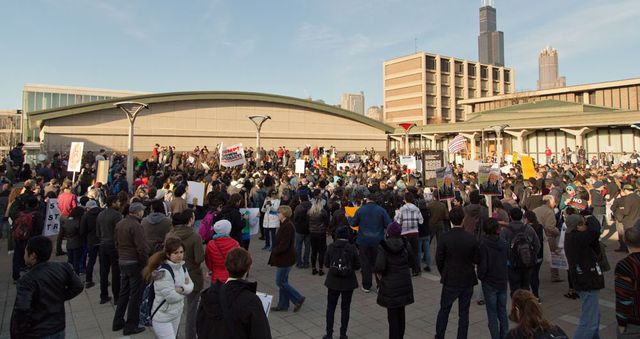
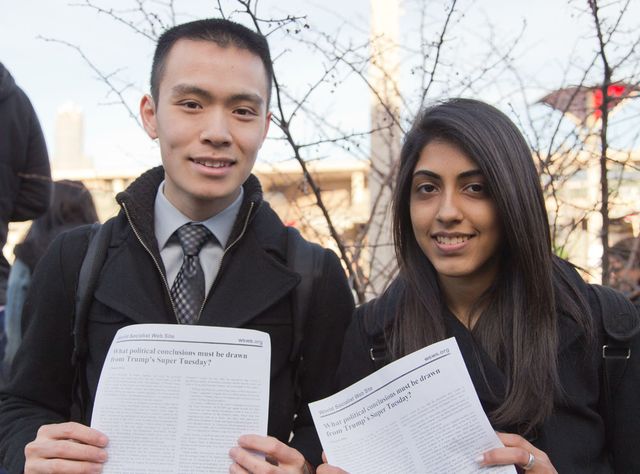






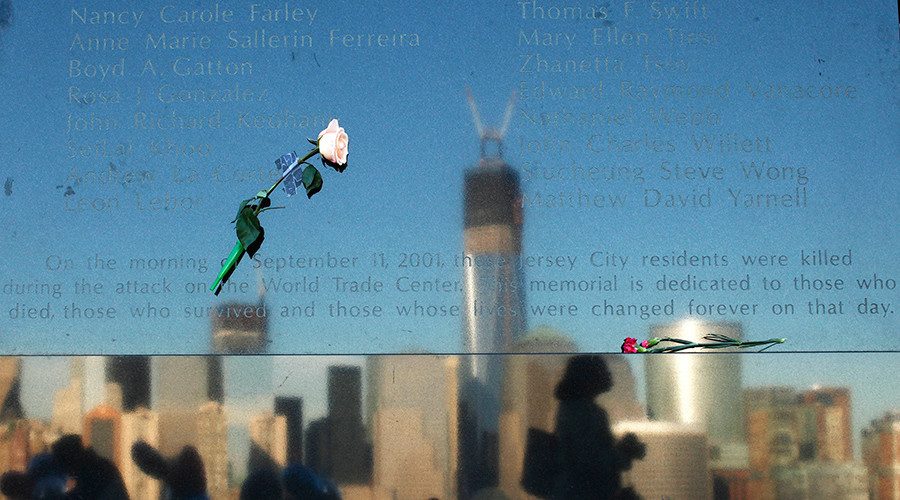
 . See the
. See the  and
and  .
. 


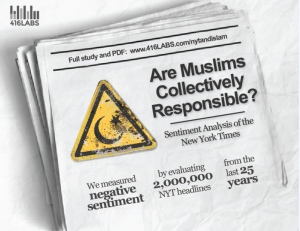














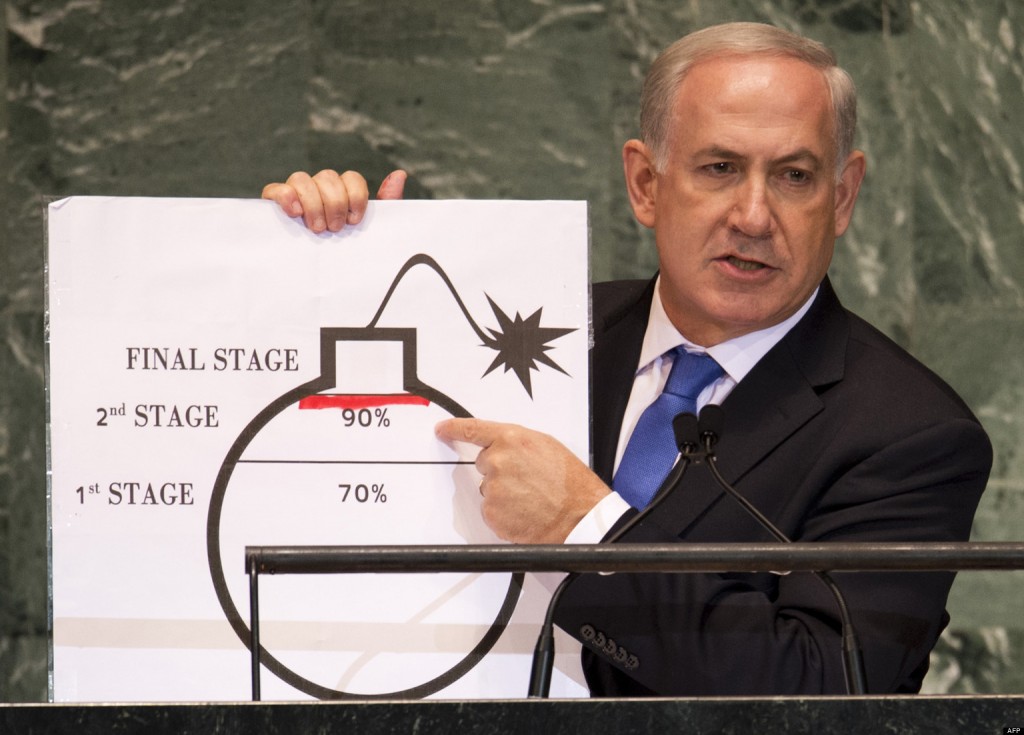

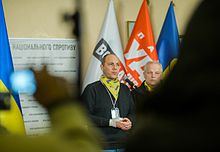


![Displaced families in Ramadi Displaced families made their way back to liberated parts of Ramadi amid UN warnings [Getty]](http://www.globalresearch.ca/wp-content/uploads/2016/03/14151189-5a16-4232-b2b5-4655ffbb959f-150x150.jpg)


